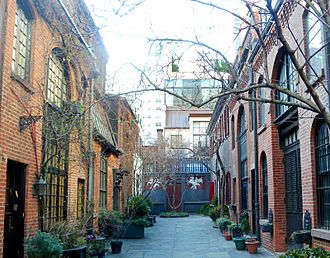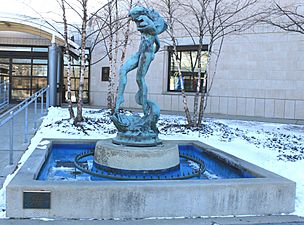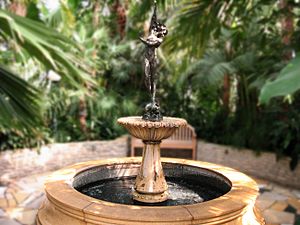Harriet Whitney Frishmuth facts for kids
Quick facts for kids
Harriet Whitney Frishmuth
|
|
|---|---|
 |
|
| Born | September 17, 1880 Philadelphia, Pennsylvania, US
|
| Died | January 1, 1980 (aged 99) Waterbury, Connecticut, US
|
| Resting place | Laurel Hill Cemetery, Philadelphia |
| Nationality | American |
| Education | École des Beaux-Arts, Art Students League of New York |
| Known for | Sculpture |
| Partner(s) | Ruth Talcott |
Harriet Whitney Frishmuth (September 17, 1880 – January 1, 1980) was an American sculptor. She was famous for her beautiful bronze artworks.
Contents
About Harriet Frishmuth's Life
Harriet Frishmuth was born in Philadelphia, Pennsylvania. When she was a teenager, she moved to Europe. She lived there for eight years with her mother and sisters.
Her Early Education and Training
Harriet studied art in Europe. She learned from famous artists like Auguste Rodin in Paris. She also studied with Cuno von Uechtritz-Steinkirch in Berlin.
After Europe, she returned to the United States. She continued her studies in New York City. She attended the Art Students League of New York. There, she learned from sculptors Gutzon Borglum and Hermon Atkins MacNeil. She also worked as an assistant to sculptor Karl Bitter.
Developing Her Artistic Career
Harriet's first major art project was in 1910. It was a bas-relief (a sculpture that sticks out slightly from a flat surface). This piece was for the New York County Medical Society.
She also created smaller items. These included ashtrays, bookends, and small figures. She made these for the Gorham Manufacturing Company.
Harriet became well-known for her bronze sculptures. Many of her works showed female figures, especially dancers. A dancer named Desha Delteil often posed for her.
Collectors and museums wanted her small bronze pieces. Her larger bronzes were often placed in gardens. Some were even used as parts of fountains. Harriet also taught art to others.
Exhibitions and Recognition
Harriet's art was shown in many places. She exhibited at the National Academy of Design. Her work was also seen at the Salon in Paris. She showed her art at the Golden Gate International Exposition in 1939.
She had her own art studio in New York City. It was located at Sniffen Court. One of her last big shows was in 1929.
The Great Depression (a time of economic hardship) affected her work. She closed her New York studio in the 1930s. She then moved back to Philadelphia.
Her Views on Art and Later Life
Harriet Frishmuth did not like modern art. She called it "spiritless." She also disliked the word "sculptress." She preferred to be called a "sculptor."
She received many awards for her art. These included the St. Gaudens Medal. She also won several awards from the National Academy of Design. She became a full member of the National Academy of Design in 1929.
Her sculpture was even part of the 1932 Summer Olympics. Art competitions were held alongside the sports events back then.
Harriet Frishmuth's drawings and papers are kept at Syracuse University. She passed away in 1980 in Waterbury, Connecticut. She is buried in Laurel Hill Cemetery in Philadelphia.

Selected Works
Here are some of Harriet Frishmuth's famous sculptures:
- Joy of the Waters (1920), Grand Rapids Art Museum, Michigan.
- The Vine (1923), Metropolitan Museum of Art, New York City.
- Call of the Sea (1924), Brookgreen Gardens, South Carolina.
- Humoresque (1924), Farmington Community Library, Michigan.
- Aspiration (1926), Rogers Tomb, Forest Lawn Cemetery, New York.
- Roses of Yesterday (1928), Rice and Gracelawn Cemetery, Indiana.
- Play Days (1925), Como Park Zoo & Conservatory, Minnesota.
- Crest of the Wave (1929), Como Park Zoo & Conservatory, Minnesota.
- Scherzo (1929), Bracken Library, Ball State University, Indiana.
- Aspiration (1933), Berwind Tomb, Laurel Hill Cemetery, Pennsylvania. This is a larger version of her 1926 statue.
- Peter Pan (1936), New Britain Museum of American Art, Connecticut.
-
Crest of the Wave (1929), Como Park, Zoo, and Conservatory, St. Paul, Minnesota.




